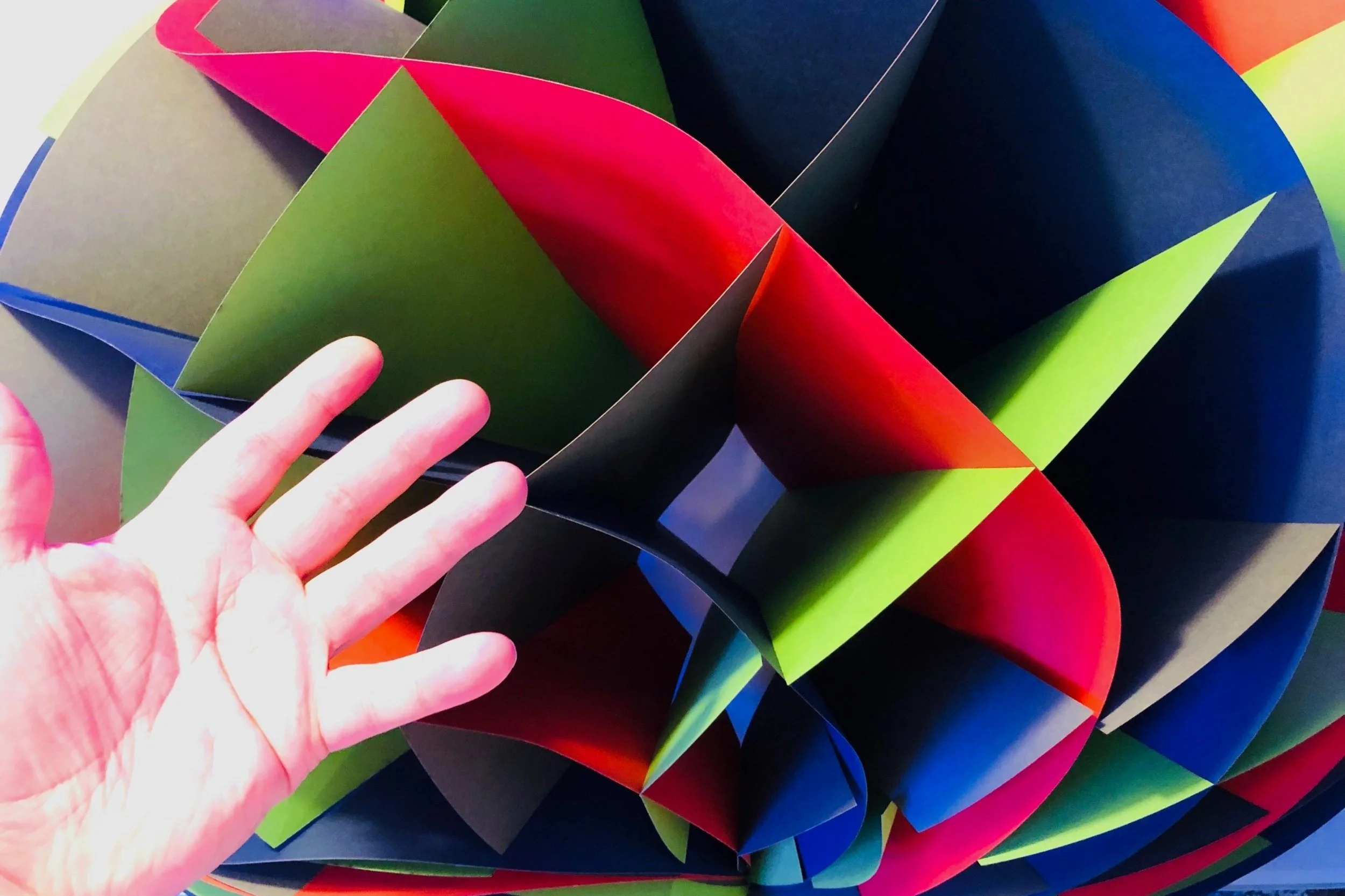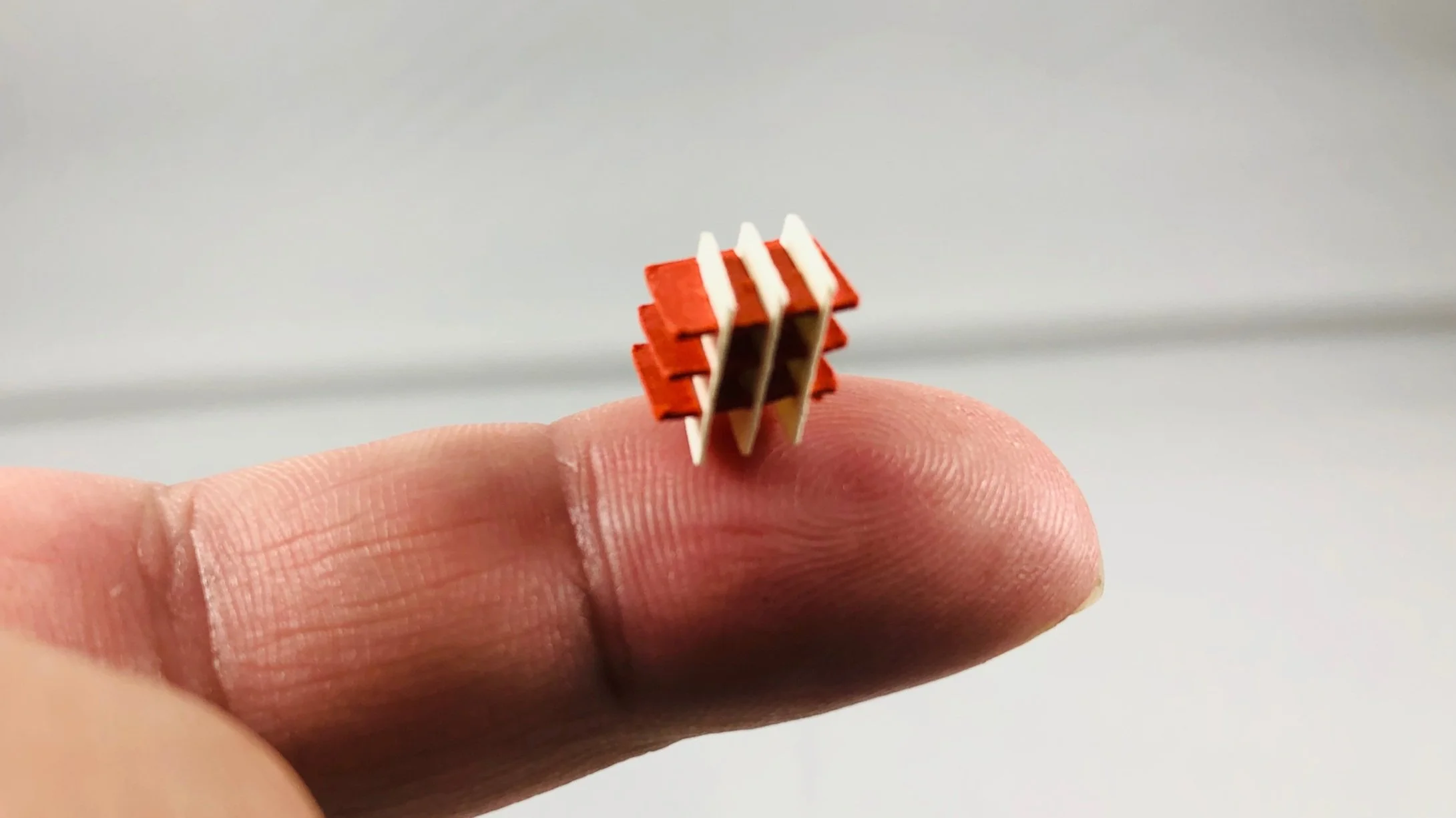Slice Forms
Explorations from the Hopkins Extreme Materials Institute (HEMI) artist residency.
Completion Date
Fall 2017
Partners
The Kang Group
Disciplines
Material Science, Digital Fabrication
Location
Johns Hopkins University
When I began my residency at HEMI, the first lab I worked with was the Kang Group, the lab of Professor Sung Hoon Kang. They knew about my work and presented aspects of their research I might be curious about given my previous interests in geometry. What an absolute gift that was, let me tell you; I’ve never felt more like a scholar.
The work that stuck out to me was their work developing cardiovascular implant devices in pediatric patients. As I understood it, the challenge was to design a heart implant for children born with heart defects that could grow with the body and prevent multiple future surgeries. Their valve designs were cylindrical and based on origami folding patterns.
This made me think about other flexible forms that could articulate from 2d to 3d space easily, and what kinds of cylinders could expand and contract. In my own research thereafter, I discovered sliceforms.
SLICEFORMS are great for exploring 2d to 3d TRANSFORMATION
A sliceform is a 3d object that is constructed from radial or interlocked flat slices forming a grid-like skeleton of the form. These forms can easily transition from a 2d folded arrangement to an articulated 3d form offering beautiful patterns and understanding of complex geometric solids.
After experimenting with a few classic slice forms: a sphere, a pyramid, a truncated hyperbolic parabaloid, etc, I began the practice of folding a torus shape, seen pictured above. This form is incredibly beautiful but will betray you at every step of construction. Of course I wanted to make it huge.
Many recreational sliceforms are constructed out of paper or cardboard, at a scale around three to five inches cubed. Because I was working with the Hopkins Extreme Materials Institute, I was thinking a lot about extremes in scale.
I encountered many interesting failures and successes as I attempted to test the sliceforms under extreme material and formal conditions such as microscopic slice forms, 3d printed sliceforms, and sliceforms that move autonomously.
I am continually attempting to scale the forms to extreme sizes, experiment with material influence and then construct the forms. The underlying geometry and surface explorations of these experimental sliceforms are both complex and fascinating but also accessible to recreational math enthusiasts like myself.
Spherical sliceform in its 2d state
Spherical sliceform in its 3d state
Tried to make the torus enormous. Failed.
A cube, but fun-size!
Concept and Fabrication
Jenna Frye
Photo Credit
Andrew Copeland
Grant Funding
Extreme Arts Residency with Hopkins Extreme Materials Institute
Special Thanks
David Elbert and Mary Reisenwitz (studio assistant extraordinaire)







